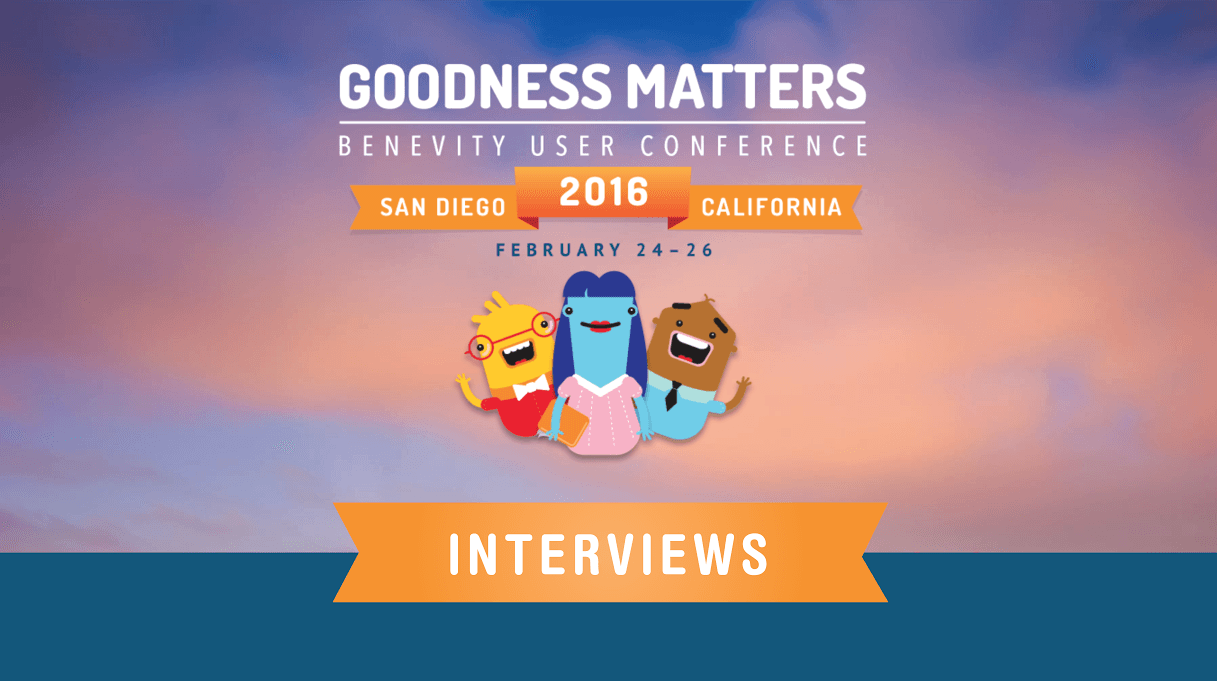Activists Highlight Oil Company Influence of Houston Science Museum


As the chorus for divestment from the energy industry becomes louder, activists aim to cut the cords between energy companies and society. One tactic has been to protest the ties between art, museums and energy companies. The Tate Gallery in London, for example, was forced to disclose the amount of sponsorship received from the energy giant BP last year. Energy companies maintain their sponsorship of the art and science institutions are nothing more than a way in which to show corporate citizenship, as in the tradition of iconic American industrialists such as Rockefeller, Carnegie, Morgan and Mellon. Opponents of this trend make the point that large companies often overstep their bounds and give money with onerous strings attached.
Now the Houston Museum of Natural Science (HMNS), one of the most visited museums in the U.S., finds itself coming under scrutiny. A coalition of non-profits is suggesting that the HMNS is front for oil and gas companies. The instigator is The Natural History Museum, a mobile exhibition that seeks to “highlight the socio-political forces that shape nature.” Insisting that corporate money has perverted the pursuit of science, the organization that runs The Natural History Museum accuses corporations of funding museums and exhibitions with the ulterior motive to enhance their agenda.
Hence this group, which includes the journalist Naomi Klein and co-founder of the International Physicians for the Prevention of Nuclear War (a 1985 Nobel Peace Prize Winner), Eric Chivian, is in their view, trying to take science back for all of society, not just for the well-funded few. The museum is a project of Not an Alternative, a coalition in New York that integrates, art, activism and education, with past exhibitions showcased in New York, London, Detroit and Mexico City.
Joining them is T.E.J.A.S. (Texas Environmental Justice Advocacy Services), a community activist group that works to create more sustainable communities in the Lone Star State. In addition, Project Row Houses (PRH), an arts organization based in one of Houston’s oldest African-American neighborhoods, will host these exhibits until the early summer.
In Houston, these groups are focused on highlighting what they describe as the “symbiotic relationship” between the HMNS and its corporate funders. The exhibition, which will be located at PRH until June 19, says it will “excavate” some of the displays and narratives that are shown at the HMNS, while highlighting the stories of the poorer minority neighborhoods that are along what is often described as the highly polluted Houston Ship Channel. The region has been cited by studies, including one at the University of Texas that is no longer posted (but highly cited), that have suggested children living near the Channel’s refineries are at high risk of illnesses including leukemia.
To that end, beginning tomorrow, The Natural History and Museum and T.E.J.A.S will organize three “toxic tours” the first Saturday of April, May and June. The two and half hour tours will work with a local university to take air quality tests within the Channel area, and will also tour around the petrochemical plants and refineries in East Houston. The work of these organizations show that while many of us are optimistic about the future of clean energy technologies and their role in minimizing the roll of fossil fuels, environmental justice in the poorest American neighborhoods is still vastly overlooked.
Image credit: Wiki Commons (Agsftw)
Video: Cora McNeil, UnitedHealth Group on Employee Engagement


In February 2016, users of Benevity's SaaS tool gathered in San Diego to discuss the future of corporate philanthropy. TriplePundit was a media partner of the event. You can follow our coverage here.
In this video shot at the Benevity User Conference, Cora McNeil explains how the Benevity software helped her team hone in on an unexpected passion among UnitedHealth Group employees: animal welfare.
https://youtu.be/DcRFnIwJ1Uc
Papua New Guinea First Nation to Submit Post-COP21 Climate Plan


Three months have passed since the historic COP21 talks concluded in Paris with a landmark global climate change agreement. It sure does seem like history, as many of the headlines that flowed back in December have slowed down to a trickle. Nevertheless, the 195 countries that agreed to submit formal climate action plans or INDCs (intended nationally determined contributions) have staff hard at work in national capitals across the globe, doing what the U.N. hopes is deriving their nations’ individual climate plans.
The first nation to actually submit an NDC -- as in, not an intended, but actual agreement -- is Papua New Guinea, a nation of 7 million people that shares a massive island (New Guinea) with Indonesia, and rests above Australia’s northern frontier. One of the poorest countries on earth, Papua New Guinea is also rich in mineral resources. Its remote location, however, in addition to the lack of infrastructure, have been massive hurdles to economic development.
Nevertheless, Papua New Guinea’s government says it is already confronting the impacts of climate change out of necessity. In 2008, residents of the Carteret Islands, an atoll northeast of the country’s main island of New Guinea, attracted headlines for what many described as the world’s first climate change refugees. Sea-level rise of about four inches (10 cm) have caused high tides to flood farms and make life near impossible for the islands’ estimated 2,600 citizens. News coverage has been spotty, but the relocation of these residents has evidently been a slow process.
Indigenous communities throughout the country have also experienced climate change in their daily lives. Conservation International is one organization that has sent researchers to learn more. One of them, Dr. Bruce Beehler, has observed how changing weather patterns over the past 30 years has affected the type of food crops locals can grow, while the types of pests with which they had to deal have also evolved over time. A region that once had well defined seasons is now dealing with climate volatility, with the results ranging from more infectious diseases to more extreme rainfall.
So what does Papua New Guinea’s government intend to do about climate change? Well, quite frankly, not much, because part of the challenge is the country’s “paucity” of data. This is a country that has few resources and will have to look to the world’s richer countries to fund almost any climate change mitigation and adaptation plans. The country’s Climate Change & Development Authority (the web site of which is often down) insists there are ample opportunities in renewable energy, energy efficiency, transportation and agro-forestry. The country’s report cites clean energy opportunities are found in hydro-power and geothermal sources, but most of them are in remote locations. The plan’s authors state the country’s electricity sector could become carbon-free by 2030, but again, details are rather sketchy.
In fairness, this is a country where 90 percent of its people live in the informal economy, and live an existence without access to fossil fuels. The country’s capital and largest urban center, Port Moresby, has have some promising climate adaptation opportunities with its population of over 350,000. For NGOs and intergovernmental organizations that have any interest in climate-related projects here, convincing people to work in this corner of the earth will be a challenge: a few years back the Economist Intelligent Unit ranked the capital the 139th world’s most livable city—within a list of 140. Considering its largely indigenous and rural population, however, forestry projects will be integral to Papua New Guinea contributing to global climate adaptation, if at all. Whether or not carbon credit programs for reforestation projects within Papua New Guinea will interest businesses and NGOs in the coming years will prove to be one example of gauging whether the NDCs will be an effective tool for nudging the world towards a low-carbon economy.
Image credit: eGuide Travel (Flickr)
Elon Musk and Tesla Motors' Big Gamble


This week, if everything goes as planned, the world will get a glimpse of Elon Musk's Tesla 3. According to Tesla, the first peek will occur on March 31, although it's still not clear just how much of an unveiling there will be.
Still, the global community is ready.
There's been a fair amount of fanfare in recent months about all of the things that the Tesla 3 automobile will finally bring to the market: autonomous driving, crossover capabilities for a larger family model and insanely high mileage. But none has garnered as much attention as its price point.
That's because, for most of the consumer base, electric cars are just a titilating fascination. Few of us, save those with truly disposable cash at their fingertips, would envision the opportunity of plunking down the cost of a modest family house (very modest, admittedly). Nice idea, and a remarkably smart concept, but for most North Americans, $90,000 or more is out of reach when it comes to basic transportation. Even with no gas bill.
But the Tesla 3 changes all of that. At $35,000 before government incentives, it puts it in the ball park with the average fossil-fuel-guzzling economy car. It allows a relatively small niche automaker to compete with the big boys like GM, Ford and Toyota and Dodge, all of which have cornered the market in one way or another in affordable transportation. Affordable fossil fuel transportation, for the most part.
And that's where analysts see the potential impact of the Tesla 3. Not only does it make cutting-edge technology within consideration of the working family, but it puts emphasis behind a basic question that no car manufacturer to date, has really succeeded in validating: Why do we even need fossil fuel cars? Why deplete our carbon reserves if we really can create sustainable, high-mileage transportation without it?
Of course, that question presumes a number of things, all of which carry their own risks for Musk's career-long pursuit for an economical electric car. It assumes that:
- State, federal, county and city governments in the U.S. and Canada will get behind boosting publicly accessible electric chargers so the cars really can be sold and used world-wide.
- Here in the U.S. and Canada, government entities will get on board in transitioning their electric grid to sustainable sources. The benefit of electric transportation is undercut by grids that rely on non-sustainable sources like coal.
- Banks and lending organizations will be progressive in their funding criteria
- Consumers will buy. (And buy and buy.)
Those are big risks for a small automaker, especially one that last year was averaging a loss of $4,000 per car sold. That loss is part of the simple math that goes into building cars on a dime: Auto manufacturers work off of reserves when they build cars, and small manufacturers incur more risk the higher they go, especially when their goals are ambitious, though popular.
But like most optimists, I am more impressed by the potential of Musk's dream than its huge risks. Even though solar energy research has been around for centuries no one expected it would eventually turn our idea of global power generation on its head. Today, it is possible not only to power a home with solar panels, but to reform the way we think of power generation for our local grid (well, in most states). It's impacted consumer rights and voice and its opened doors for improving living standards in some of the world's remotest communities.
Elon Musk's vision has that potential as well. These next few weeks, we may know whether that vision and appeal carries weight in the consumer market. With General Motors' Bolt electric car already in initial production and due to hit the market at about $37,500 without incentives, the Tesla 3 will have some competition -- some high-production competition. But it will also have mastered something that other larger companies haven't: a consumer fascination for the little guy that is willing to put everything on the line for a vision and a commitment to transform the way we live. And to many, that's worth supporting.
Image credit: Flickr/Mauricio Pesce
Comparison to Big Tobacco Has NFL Fuming


Despite its financial success, the National Football League has been fumbling on the public relations front the past few years. Constant episodes of domestic violence that involve its players, the bungled “Deflate-Gate” investigation and the NFL’s reputation for wrenching public funds from desperate cities in order to fund stadiums have relentlessly dogged the league. The NFL has also been sidetracked over the thousands of former players who have alleged they suffered from concussions long after they retired from the sport. The NFL has claimed for years that they have been proactive on researching the health risks related to concussions, but the New York Times has suggested that its research was highly flawed.
As with other news stories covering the concussion controversy, the NFL has been playing defense, but the NYT article has had the league’s legal team fully blitzing the newspaper (which, incidentally, is one of the few media companies still able to fund investigative journalism). What has really infuriated NFL executives within their Manhattan headquarters is the Times’ suggestion that the league has had longstanding ties to the tobacco industry. The NFL is now so angry at the allegations that they have demanded that the Times’ editors retract the story.
Clearly, the league is on the losing side of the concussion argument; one of its executives recently admitted that playing football has been linked to chronic traumatic encephalopathy (CTE), a neurodegenerative disease that can lead to memory loss, erratic behavior, dementia and depression. The calls for continued research amplified in 2012 when Junior Seau, a revered linebacker, shot himself at the age of 43. His brain later tested as positive for CTE, and since then his family has been vocal in urging the NFL to become more proactive when confronting head trauma and long term health. While the league has insisted has put many resources into researching the links between concussions and CTE, the Times article has pointed out that the NFL’s research omitted over 100 reported cases of concussions, including those reportedly suffered by 1990s NFL stars Steve Young and Troy Aikman.
Now backed into a corner, the NFL is punching back, and punching hard. Dismissing the Times’ claims that NFL studies suppressed or omitted information from its studies, the league’s executive vice president, Joe Lockhart, insists that “the NFL has been at the forefront of promoting and funding independent research on these complex issues.”
But what is really giving the NFL an opportunity to distract its fans, sponsors and the American public from this ongoing concussion crisis is the Times’ outline of the relationships shared between the league and Big Tobacco. While the article immediately outlined the fact that there is no direct evidence that the NFL took its strategy from tobacco companies, its authors have demonstrated that the two industries had long shared attorneys, consultants and lobbyists. As far back as the 1970s, the NFL had hired companies who included the Tobacco Institute as a client. But in finding a straw man in its defense against the Times’ allegations, the league’s statement has retorted that “the NFL is not the tobacco industry. It had no connection to the tobacco industry.”
Of course, the definition of “connection” can be widely interpreted. But the tobacco argument is a sideshow to the larger argument over whether the NFL could have done more to protect its players from head injuries, and what can it do in the future to protect future players and guarantee the sport’s enduring popularity. This may be an annoying distraction as the league sees opportunities to expand the sport’s presence in Europe, Latin America and China, but its executives have got to focus on the mounting health problems here at home. When some of your iconic players, including Aikman, Terry Bradshaw, and Drew Brees have either said their kids will not play football, or do so with the only with the most caution, the NFL has got to step back, listen more to its players and their families, and litigate less.
Image credit: Matthew D. Britt (Flickr)
Another Grocer Commits To Cage-Free Eggs


Another grocery store chain has committed to selling only cage-free eggs. Minnesota-based Supervalu announced plans to transition to selling 100 percent cage-free eggs at its network of 3,407 stores by 2025 or sooner if possible.
Cage-free eggs currently make up almost 12 percent of Supervalu’s retail eggs sales. The company, one of the largest grocery wholesalers and retailers in the country with annual sales of about $18 billion, will report annually on the progress toward its goal to sell only cage-free eggs.
Back in August, Supervalu announced that all of its Wild Harvest brand egg products would be cage-free by the end of 2015. Wild Harvest sells only cage-free eggs now.
Mark Van Buskirk, Supervalu’s executive vice president of merchandising, marketing and retail, said in a statement that the Wild Harvest brand was “a natural starting point for understanding customer interest and support for cage-free eggs.” He added that Supervalu offers other store brands that are 100 percent cage-free. “As the available supply increases, we will continue to expand our cage-free egg offerings,” he said.
The advocacy group Mercy For Animals (MFA) held discussions with Supervalu in advance of its latest commitment. The company’s decision to transition to cage-free eggs will be a positive one for the hens who live in small wire cages in which they can’t spread their wings, MFA points out in a blog post. Or as Matt Rice, MFA director of investigations, told Triple Pundit: “As one of the largest grocers in the country, Supervalu’s commitment to go cage-free in its egg supply chain will spare more than 1.5 million hens annually from suffering in tiny wire cages so small the birds can’t walk or even fully spread their wings for nearly their entire lives.”
It will take time for Supervalu to transition to 100 percent cage-free eggs. “Big changes like this take time to implement as egg producers retrofit their facilities to align with the Supervalu’s new animal welfare policy, but the company has pledged to work with its suppliers to speed up the timeline as much as possible,” Rice said.
Van Buskirk said that it will take time “because there is currently a limited supply of cage-free eggs.” He added that Supervalu "will continue to work with our suppliers to move as quickly as possible toward a sustainable, 100 percent cage-free egg supply chain.”
Supervalu has also committed to implementing other humane animal practices in its pork, dairy and chicken supply chains. “Our decision to move toward selling only cage-free eggs reflects our ongoing commitment to improving animal welfare practices across the industry,” Van Buskirk said.
The move by Supervalu to transition to cage-free eggs follows similar announcements by other grocery store chains, including Kroger and Albertsons. Consumers who “care about animal welfare and want to ensure that animals are not being tortured on factory farms are driving the trend to cage-free eggs” are driving the trend toward cage-free eggs, Rice said. “Supervalu are responding to consumers demand by requiring their egg suppliers do away with cruel cages that have no place in a civilized society,” he added.
Supervalu’s commitment will likely influence other grocery store chains to implement similar policies. “This forward thinking policy should also help encourage other grocers, like HEB and Publix, to take similar stands against such blatant cruelty to animals,” Rice said. “Any food company that has not yet adopted a cage-free egg policy is simply out of step with consumer expectations and business trends.”
More grocery store chains committing to selling cage-free eggs will indeed be a positive move for America's hens, and for the consumers who care about them.
Photo: Flickr/Dano
3M Creates a Sustainability Art Installation


3M is known for products such as Post-it Notes. Many of us couldn’t function without them and we’re very thankful they exist. Recently, 3M outdid itself and created something even more amazing: a sustainability art installation. The entire installation was made from 3M products and showed how the world could look with 9 billion people in 2050.
It’s an immersive experience that was designed to get people thinking about “how we can all contribute as individuals and companies to improve lives,” said Penny Wise, 3M’s chief branding officer. Maybe that's why the installation was called "The Big Picture."
The installation debuted at SXSW and gave hundreds of people the opportunity to walk through four zones and learn more about sustainability. The experience started in dark and crowded zone. Large black balls hung suspended from the ceiling, representative of how polluted and dark the world might be in 2050 if we continue to damage the earth.
The second section had visitors walking through a web of dark rods, symbolic of materials 3M uses to purify air and water. As people strolled through the art, a recorded voice emanated from speakers and explained to people the meaning behind the artistic zones.
The third area had long bright reflective panels that swayed with the air flow. They were made from 3M’s ultra-reflective materials and represented harnessing energy from the wind and sun. The last zone had a molecular design to depict the technology 3M uses in healthcare and food safety. This final section was bright and beautiful, an indicator of how the world would feel if people focus on creating a sustainable world.
After walking through the installation, SXSW goers were greeted by a bartender offering free drinks and by 3M employees interested in exchanging ideas about sustainability. There were also digital panels explaining eco-friendly actions every person could take to lighten their own environmental impact. The ambiance was fun and chill. If all conversations about sustainability began with art and beer the world would probably be a much better place.
The experience was “meant to stimulate dialogue and thought,” said Wise. “This is about ideas and collaboration and thinking about solutions together. We wanted to take a different approach and inspire creativity in our audience as well as in ourselves. We can’t do this alone so it’s important to engage people and get them creative and participating in our dialogue.”
Wise says sustainability has always been at the core of 3M’s company culture. In fact, one of its programs, the Pollution Prevention Pays program, was created way back in 1975. The company is making several other large sustainable improvements, but one of the most interesting initiatives is a very small one. Last summer 3M’s headquarters planted bee friendly flowers and brought in two bee colonies to help pollinate trees and flowers. “We would like to welcome the bees to our 3M community as the smallest, but some of the hardest working 3Mers yet,” the website states. This project demonstrates 3M’s dedication to sustainability down to the tiniest of details.
Another unique aspect of 3M’s sustainability culture is its dedication to collaborating with others, a characteristic clearly seen in the immersive art installation. 3M also recently collaborated in an even bigger way by framing the company’s 2025 sustainability goals around the United Nation’s Sustainable Development Goals for 2030. The United Nations has invited companies to join forces to make the world a better place and 3M has eagerly jumped on board.
If all companies join 3M’s heart for people and the planet, then in 2050 when 9 billion people inhabit the planet, the world will be as bright and beautiful as the 3M art installation.
https://www.youtube.com/embed/-lHkm9qKdew
Photo credits: Photos by 3M
How Technology, Innovation and Free Market Can Help the Food Crisis


By Meghna Tare
In 1798, Reverend Thomas Malthus wrote a book entitled An Essay on the Principle of Population. He laid out a simple proposition with a dire outcome. Assuming 1) that the food supply grows arithmetically (increasing at a constant rate of, say, 10 million tons of grain per year) and 2) that a healthy population grows geometrically (doubling every 30-50 years), the prospects for long run human progress and survival are dim. He argued that eventually population growth will outstrip the food supply.
Since Malthus wrote his book, human population has indeed grown rapidly. But food production has grown even more rapidly, as it evident from the Green Revolution from 1950 to 1980s. From 1950 to 1984, the world grain output increased by a factor of 2.6. Over the same period, population roughly doubled. The world’s population is expected to increase from 7 billion today to 9 or 10 billion by the end of the century, according to the United Nations thereby increasing the pressure on the food supply, especially in developing countries. This will require a 70 percent increase in food production, without additional land or natural resources to do so.
Modern agriculture produces a lot of food, and produces it cheaply; two feats that people have spent all of the industrial revolution to achieve. Joad’s story in "The Grapes of Wrath" portrays this model of economic development: low productivity, labor intensive small farmers driven off the land by high productivity and capital intensive agriculture.
But it is not just a matter of increased food production keeping up with population. Rising affluence has resulted in changing diets that increase the demand for food production per person. Because of the overall rise in income, we actually have more disposable income than our grandparents did, but our spending on food — proportional to our income — has actually declined dramatically since 1960, the U.S. Department of Agriculture. The average share of per capita income spent on food fell from 17.5 percent in 1960 to 9.9 percent in 2013.
So, in essence we are paying less for what we need more: food! We are producing more food at the expense of quality to support the population, but in the process putting a strain on land and water resources, and displacing small farmers and local communities because they are not able to meet the demands of big supermarket chain. Malthus captured the sense in which fundamental limits on natural capital place a bound on supply, which when combined with rising demand eventually leads to unsustainable outcome.
Free Market to solve the food crisis
About ten years ago, a few food banks and Feeding America gathered together in Chicago to figure out how to be efficient in distributing the food to all the food banks. Feeding America had trouble moving the oranges from California to Alaska or potatoes from Idaho to some other state because of the way the transportation system was set up. This system had real consequences for hungry people all over the country. It meant that people in Alaska were not getting fresh produce. And at the same time, the food bank in Idaho had too many potatoes and not enough other stuff. So Feeding America created its own little economy and gave out fake money to all the food banks, which they could use to buy the food- distributing fake money to the neediest places and then letting them buy whatever they wanted out of this national Feeding America system. It was like setting up a whole economy. Fake money, prices set by auctions, and with that key twist; the food banks that fed the most people would get the most fake money. The fake money could be treated like an allowance. The food banks could spend it every day on something little, or hoard it and splurge on large quantities of desired product like corn flakes cereal. For stuff that's really unpopular, food banks did not want to pay to truck it in or find a place to store it. So they could bid negative shares. In other words, say for example Feeding America has large qualities of pickles; the food bank will take the pickles in exchange for some extra fake money.
This is free market at its best. Skeptics however believe that free markets are a cause of food scarcity. The problem is in fact, that free markets aren’t working efficiently enough. Lots of food that is actually produced out in the fields never makes it to markets, at least not in any condition to be eaten. That’s because the physical elements of a functioning market – usable roads, efficient transportation and storage facilities – simply haven’t received sufficient investment.
And then there is the problem of information flowing. Farmers don’t always have real-time access to reliable information on prices and forecasts. Empowering farmers with better information and communications tools will help farmers have information about markets at their fingertips and can better plan their harvests and distribution. Advanced information technology, improved communications systems, robotics, drones, and other new technologies have the potential to boost agricultural yields.
And lastly, there’s the problem of food waste. If our best chance of escaping a future food crisis is innovation and policies, then an obvious place to look for a solution is food waste. Somewhere between 30 to 50 percent of the food we grow around the world goes uneaten. Food waste is a tremendous global problem, with an estimated 24 percent of calories produced for human consumption never getting eaten. Most of this waste happens at the final consumption stage. The Guardian reports that “the average French person throws out 20 to 30 kilograms (44 to 66 pounds) of food a year – 7 kg (15 lbs) of which is still in its wrapping.” American shoppers throw away about one-fifth of everything they buy at the grocery store, according to a fascinating documentary called "Just Eat It."
On the other end of the supply chain, retailers often find themselves with food that is bruised or otherwise unattractive but still edible. Technology and innovative policies could help to connect this food with people who could use it. Spoiler Alert, a website, smartphone app and online marketplace finds good uses for spoiled, expiring, and excess food and enable food banks and other poverty-focused organizations to find out about these products and claim them. Refrigeration and modern packaging technologies can increase the safety of our food, the distance across which it can be transported, and its extended freshness. The French national assembly recently voted unanimously to pass as legislation banning French supermarkets with a footprint of 4,305 sq ft from throwing away or destroying unsold food, and must instead donate it to charities or for animal feed. This legislation is passed at a time when France battles an epidemic of wasted food that has highlighted the divide between giant food firms and people who are struggling to eat. France’s new law is a move in the right direction. Wasting food needs to become a socially abhorrent thing to do – much like tossing garbage on the ground or throwing trash in recycle bins. Such “circular economy” approaches to food system will help us solve the food crisis.
Today’s complex challenges cannot be solved with a single solution; there is no silver bullet. With finite resources investment in research, innovative technologies and breaking down barriers to access are necessary to ensure food security for future generations.
Image credit: Flickr/Dean Hochman
Meghna is the Executive Director, Institute for Sustainability and Global Impact at the University of Texas at Arlington where she promotes sustainability in greening facility operations, promoting innovative research, and supporting and encouraging student initiatives. She recommends policies and strategies to advance the university’s commitment to sustainability. She is a TEDx UTA speaker, graduated with an MBA in Sustainable Management, was featured as Women in CSR by TriplePundit,, and is an active blogger. You can follow her on twitter @meghnatare , connect with her on LinkedIn or visit her website.
Huge Potential: Rooftop Solar Could Power 39% of America


Rooftop photovoltaic (PV) solar panels could generate 1,118 gigawatts (GW) of energy -- more than a third of America's current energy needs -- if installed throughout the most solar-rich regions of the country. These latest figures from the U.S. Energy Department show the staggering potential of decentralized renewable energy.
Already, rooftop solar is booming in certain states like California, which have favorable policies such as net metering -- a policy the Golden State preserved earlier this year. In fact, California accounts for the majority of U.S. solar installations and is on pace to meet its goal of 50 percent renewable energy by 2035.
Unfortunately, this isn't the case in California’s sunny neighbors, Nevada and Arizona, which restricted net metering last year -- essentially stunting rooftop solar growth. This was a blatant power-grab by big utilities that prefer to control energy generation at the cost of renewable expansion. Florida, the so-called Sunshine State, is even worse, as anti-solar initiatives led by the Koch Brothers have kept the state tied to dirty fossil fuels. Without better action from those states and others, there's no chance we'll even get close to the solar potential the Energy Department says we're capable of.
In fact, the best part about this study is that it might be an underestimation, said Robert Margolis, senior energy analyst for the National Renewable Energy Laboratory (NREL) and co-author of the report, in a statement.
“It is important to note that this report only estimates the potential from existing, suitable rooftops, and does not consider the immense potential of ground-mounted PV,” Margolis said. “Actual generation from PV in urban areas could exceed these estimates by installing systems on less suitable roof space, by mounting PV on canopies over open spaces such as parking lots, or by integrating PV into building facades. Further, the results are sensitive to assumptions about module performance, which are expected to continue improving over time.”
In fact, the last such assessment from the Energy Department estimated solar potential at just 664 GW. You can bet that as technology get cheaper, better and more efficient, the projected potential for solar will get larger and larger. Now, it's time for the main actors in this field to take notice.
"Armed with this new data, municipalities, utilities, solar energy researchers and other stakeholders will have a much-improved starting point for PV research and policymaking, both regionally and nationwide,” said Pieter Gagnon, an engineering analyst of solar policy for NREL and lead author of the report, in a statement.
This means breaking the stranglehold that backwards-thinking utilities and dirty fuel lackeys like the Koch Brothers have on our energy systems. It's getting increasingly urgent, as Arctic ice is at record lows and we just experienced the hottest February on record. We don't have any time to waste to shift to a renewable-first economy driven by decentralized rooftop solar. Hopefully this report points more households, businesses and energy producers in the right direction.
Photo Credit: Pixabay
Monsanto 2015 Sustainability Report: Does It Go Far Enough?


Monsanto's 2015 Sustainability Report, released this month, is everything one would expect to see in a corporate sustainability report. It has goals. It has highlights of past accomplishments. It reflects Monsanto's considerable knowledge and research of the planet's endangered water systems, food and climate risks.
And to those ends, the report goes far beyond some companies' self-examination of CSR objectives and accomplishments. It addresses the need for corporate social responsibility (CSR) and the need for accountability that is driving business today. In 2015, Monsanto did this by a variety of means that, in and of themselves, provide leadership:
- It cut its greenhouse gas emissions through "crop protection" operations by 16 percent of its 2020 goal.
- It reached just under 9 percent of its 2020 goal to reduce water use in its irrigation projects.
- It educated farmers on how to efficiently use nutrients and, according to the company, helped to "curb greenhouse gas emissions on 1 million acres in the United States," attaining 20 percent of its goal.
- It increased production of its four main crops -- corn, soya, cotton and canola -- by 13 to 37 percent since 2000.
- And in December 2015, made a decision to neutralize its carbon footprint by 2021.
Of course, that's just a shortlist of the things the company has highlighted in its priorities.
Still, the question that is often asked with CSR reports -- and would certainly appear to apply here -- is: Does it go far enough?
Is an 8.75 percent reduction in water expenditure sufficient for an industry that has built its commerce around global water availability? Has it developed ways to replace flood irrigation in soy and other fields with drip methods as companies in places like Israel have? (Monsanto indicated in its 2013 report that it is helping farmers to transition to more effective models, such as drip irrigation, particularly in wheat irrigation.)
Is 25 percent -- the original 2020 goal for reducing water usage -- going to meet the planet's needs in light of climate change?
Monsanto's success in meeting 73 percent of its goal to eradicate 20 percent of its greenhouse gas emissions is laudable. But does that perhaps mean it can do more?
And has it addressed the issues that communities have identified over the past few years? Has it taken on consumer concerns adequately enough to guarantee that their rights are protected and supported by laws and new legislation?
In the past three years, Monsanto has dedicated more than $20 million to defeat GMO-labeling bills in the U.S. In each of the past eight years, it has consistently outspent all other agribusiness entities in political spending. Yet these efforts seem to be in stark contrast to what surveys and polls consistently show consumers want. More than 90 percent of those polled in have said they want GMO products labeled and oppose efforts to limit that transparency. No doubt Monsanto would agree: A huge part of being a responsible company is listening to and supporting its customer base, including the consumers its B2B commerce benefits from.
And of course, another aspect is addressing and supporting resilient communities. Since at least 2015, four cities -- San Jose, California, Seattle and Spokane, Washington, and South Wales, U.K. -- have taken legal action against Monsanto for pollution of waterways and property from chemicals the company is alleged to have discharged when it dealt in chemical manufacturing.
Although Monsanto has told at least one U.S. litigant that it "is not responsible for the costs alleged in this matter," the company agreed to contribute to cleanup in Wales where chemicals were dumped during that same time-frame. Will Monsanto take steps to dialogue with and meet the environmental needs of U.S. cities as they work to meet the guidelines of the Clean Water Act?
Corporate social responsibility reports have become a platform to show the goodness of a company's actions and intentions. At a time when we are facing the impacts of global warming, however, these reports have also become a gauge by which consumers critique how a company's goals measure up against the risks they and their communities are facing.
If Monsanto wants to hear real applause to its accomplishments, aggressively addressing those things that really hit home for local communities, like controversial legal rights, pollution eradication and water security, would reinforce the value and the message of its next sustainability report. It will be interesting to see how the rest of 2016 shapes up.
Images: Monsanto; Jan Smith; eutrophication&hypoxia; worldwaterweek